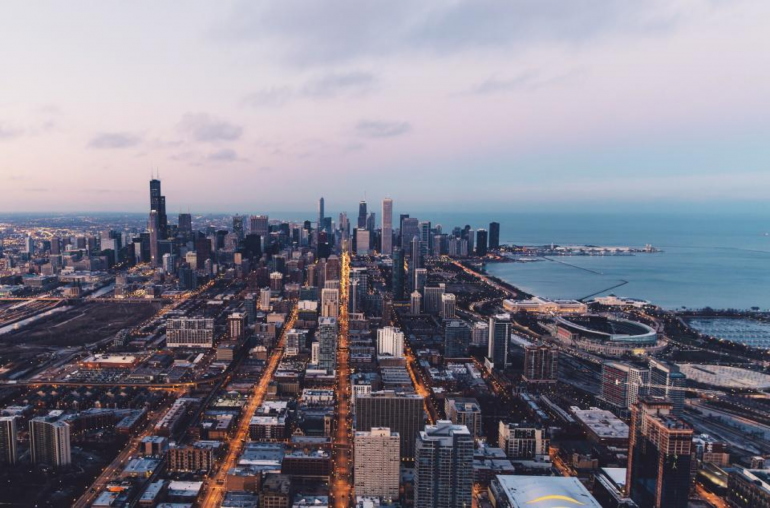Essential Software and Hardware for Creating Bird's Eye View 3D Renderings

Bird's eye view 3D renderings have become invaluable tools in architecture, urban planning, and real estate industries. These renderings provide a top-down perspective that showcases the full scope of a project, from layout to landscape, allowing for better visualization and decision-making. Aerial 3D rendering services are particularly useful in large-scale projects where understanding the full context of a space is crucial.
With the rise of 3D aerial view rendering services, professionals increasingly rely on these renderings to communicate complex ideas and enhance presentations. In this article, we'll explore the essential software and hardware required to create high-quality bird's eye view 3D renderings that meet professional standards.
Key Software for Bird's Eye View 3D Renderings
Creating high-quality aerial 3D rendering services requires the right software tools. Here are some of the most popular programs used for aerial rendering services:
- 3Ds Max: Known for its versatility, 3Ds Max is widely used in the industry for creating detailed architectural visualizations, including bird’s eye view renderings. Its robust modeling, lighting, and texturing features make it a go-to choice.
- Blender: An open-source option, Blender provides a powerful solution for creating stunning 3D renderings without the hefty price tag. It offers a range of tools that are well-suited for producing aerial views.
- SketchUp: Renowned for its ease of use, SketchUp is perfect for quick modeling, particularly for urban planning and large projects. It allows users to generate simple yet effective 3D aerial view rendering.
- Lumion: Ideal for real-time rendering, Lumion excels at bringing landscapes and buildings to life with realistic textures and environments, making it perfect for 3D aerial view rendering services.
These software options provide professionals with various capabilities, allowing them to create everything from basic models to highly detailed aerial 3D renderings.
Choosing the Right Rendering Engine
The choice of rendering engine is crucial for producing photorealistic aerial 3D rendering company results. Here are a few top rendering engines used in aerial rendering services:
- V-Ray: Known for its realistic lighting and material textures, V-Ray is one of the most powerful rendering engines available. It’s beneficial for creating stunning lighting effects in bird’s eye view renders.
- Unreal Engine: Popular in both gaming and architecture, Unreal Engine offers real-time rendering and stunning visuals. It’s perfect for large-scale projects that require detailed environments, making it ideal for aerial 3D rendering studios.
- Corona Renderer: Corona is prized for its simplicity and ease of use while delivering high-quality results. Its integration with 3Ds Max makes it an excellent choice for aerial 3D rendering company projects.
Choosing the right rendering engine can drastically affect the final outcome, ensuring that textures, reflections, and lighting look as realistic as possible.
Essential Hardware for High-Performance Rendering
Having the right hardware is critical when creating complex 3D aerial view rendering services. Here are the most essential components to consider:
- GPU (Graphics Processing Unit): A powerful GPU, such as the NVIDIA GeForce RTX series, is essential for handling the intensive graphics processing required for rendering. It accelerates the rendering process and ensures that scenes render quickly and smoothly.
- CPU (Central Processing Unit): A multi-core CPU, like the Intel Core i9, is crucial for managing the heavy computational tasks involved in rendering. More cores mean faster processing times.
- RAM (Random Access Memory): Adequate RAM is essential for handling large projects. 32GB or more is recommended for professional-level aerial 3D rendering studios to ensure smooth multitasking and rendering.
- SSD (Solid State Drive): Using an SSD ensures that files are loaded quickly, significantly speeding up the rendering process and reducing downtime.
Even the most sophisticated software can lag without the right hardware, making it difficult to achieve high-quality results within a reasonable timeframe.
Graphics Tablets and Monitors for Precision Work
Precision is key when creating detailed aerial 3D rendering services; high-quality monitors and graphics tablets help professionals achieve it.
Wacom Tablets: Wacom tablets are the industry standard for artists and designers who need precision when creating intricate details. These tablets allow for fine control over every aspect of the 3D modeling process.
4K Monitors: High-resolution monitors, such as 4K screens, provide sharp visuals that make it easier to spot small details during the modeling and rendering process. These are essential for ensuring that 3D aerial view rendering companies deliver the best possible results.
Both tools enhance the workflow, allowing for more control and precision in the final output.
The Importance of Cloud Rendering Solutions

Rendering complex scenes can be extremely time-consuming and hardware-intensive. This is where cloud-based rendering solutions come into play.
- Google Cloud and Amazon Web Services (AWS): Both Google Cloud and AWS offer scalable rendering solutions, allowing users to offload their rendering tasks to the cloud. This reduces strain on local hardware and can significantly speed up the process.
- Cloud-Based Rendering Services: Companies that provide cloud rendering offer flexible pricing models, making it possible to handle large-scale 3D aerial view rendering projects without investing in high-end hardware.
Cloud rendering is an increasingly popular option for aerial 3D rendering companies that must manage multiple projects simultaneously without compromising quality.
Case Studies: Bird’s Eye View Renderings in Action
Here are a few real-world examples where 3D aerial view rendering companies successfully employed the right software and hardware to create impactful bird’s eye view renderings:
- Urban Planning in Singapore: A leading architectural firm used V-Ray with 3Ds Max to create a bird’s eye view rendering of a new urban district. Cloud rendering reduced the project’s completion time by 30%.
- Real Estate Project in New York: A 3D aerial view rendering company employed Lumion to showcase a high-rise building within its urban context. This allowed buyers to visualize the entire neighborhood, leading to faster pre-sales.
In addition to 3D rendering for master planning or individual structures, real estate professionals are increasingly turning to immersive technologies to enhance property marketing. For example, real estate 3D walkthroughs offer a dynamic and interactive experience where clients can virtually explore interiors and exteriors at their own pace, beyond what static bird’s eye renderings provide. Harnessing specialized platforms enables high-resolution virtual tours that capture every corner of a property, stitching together panoramic views with seamless transitions, making these walkthroughs ideal for remote client presentations or reducing the need for multiple on-site visits.
These case studies demonstrate how the right combination of tools can lead to successful outcomes in aerial 3D rendering services.
Conclusion
Creating professional aerial 3D rendering services requires both the right software and hardware. Tools like 3Ds Max, Blender, and Lumion are crucial for modeling and rendering, while powerful rendering engines such as V-Ray and Corona ensure photorealistic results. Hardware like a high-performance GPU, multi-core CPU, and sufficient RAM further enhance the rendering process, while cloud solutions offer flexibility for large projects.
By investing in the right tools, aerial 3D rendering studios can produce top-quality renderings that improve decision-making, enhance visual communication, and meet the needs of industries like architecture, urban planning, and real estate.
About the author
Copyright © . All Rights Reserved
